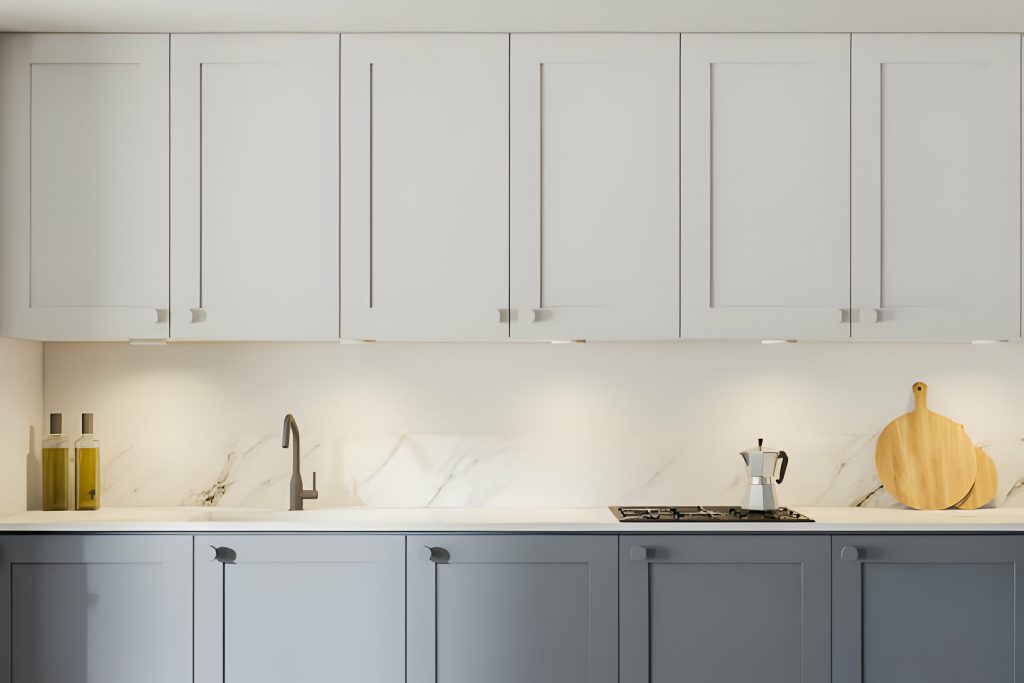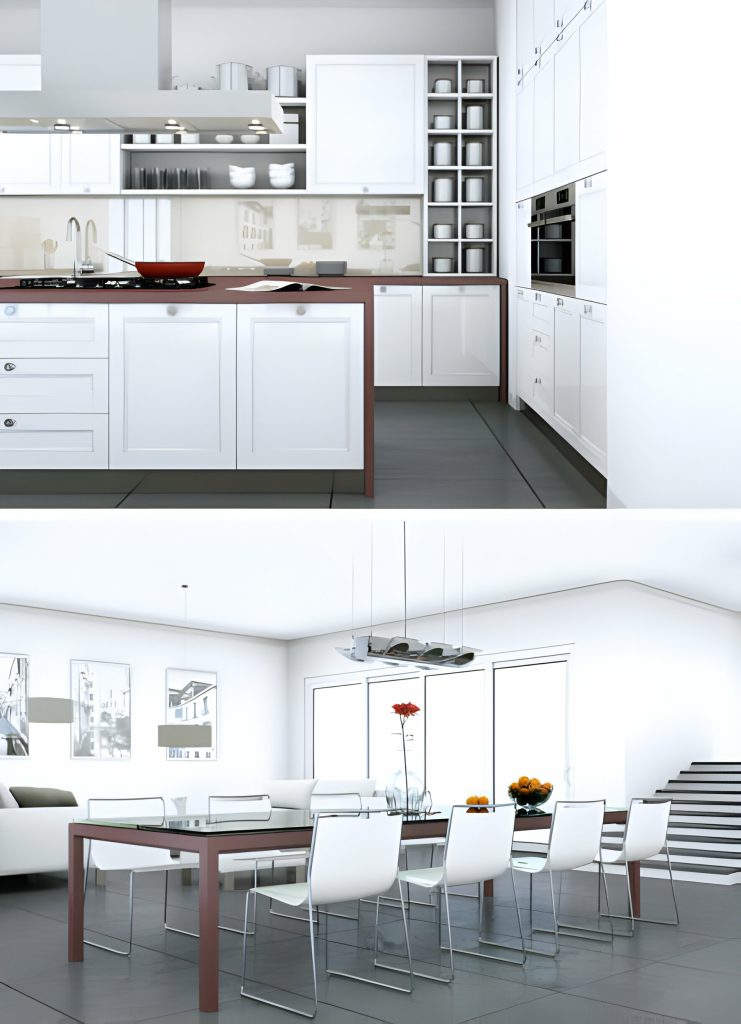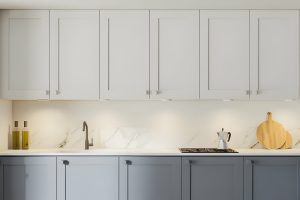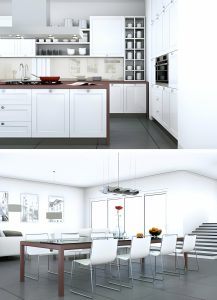Are your kitchen cabinet doors not closing as softly as they used to? Don’t worry, you can easily adjust them yourself. In this article, we’ll guide you through the process of adjusting soft close kitchen cabinet doors. You’ll learn how to assess the problem, adjust the hinges, fine-tune the door alignment, and test your adjustments. We’ll also share some maintenance tips to ensure long-lasting results. Get ready to have your cabinet doors closing smoothly again!
Assessing the Problem
To begin assessing the problem of soft close kitchen cabinet doors, you should first determine if the doors are misaligned or if there is an issue with the hinges. Troubleshooting techniques can help identify the root cause of the problem. One common installation mistake that can lead to misaligned doors is improper alignment of the cabinet frames. This can occur if the frames are not properly leveled during installation. Another mistake is incorrect placement of the hinge brackets. If the brackets are not aligned properly, the doors may not close smoothly or may not align with the cabinet frames.
To determine if the doors are misaligned, check if they are overlapping or leaving gaps between them. If the doors are not aligned with the cabinet frames, you can try adjusting the hinges. Ensure that all screws on the hinges are tightened properly. Use a screwdriver to make small adjustments to the position of the hinges, moving them up or down, or left or right, as needed.
If the hinges are the issue, check if they are loose or damaged. Tighten any loose screws and replace any damaged hinges. It’s important to use the correct size and type of hinges for your cabinet doors.
Adjusting the Soft Close Hinges
To adjust the soft close hinges on your kitchen cabinet doors, follow these steps. First, check for any common issues that may be affecting the performance of the soft close hinges. Common problems include the door not closing properly, slamming shut, or not staying closed. If you encounter any of these issues, troubleshooting is necessary before making any adjustments.
To troubleshoot the hinges, start by examining the cabinet doors and hinges for any signs of damage or misalignment. Ensure that the hinges are securely attached to both the cabinet and door. If there are any loose screws, tighten them using a screwdriver.
Next, check if the soft close mechanism is functioning correctly. Open the door fully and slowly release it. The soft close mechanism should engage and gently close the door without any force. If the door slams shut or does not close properly, the soft close mechanism may need adjustment.
To adjust the soft close mechanism, locate the adjustment screws on the hinges. Using a screwdriver, tighten or loosen these screws to fine-tune the closing speed and force of the door. Make small adjustments until the door closes smoothly and quietly.
Fine-tuning the Door Alignment
Align your kitchen cabinet doors by making precise adjustments. Proper door alignment is crucial for the overall functionality and aesthetics of your kitchen cabinets. Here are some key steps to fine-tune the door alignment during the door installation process:
- Check for common alignment issues: Before making any adjustments, it’s essential to identify the common issues that may affect the door alignment. These can include uneven gaps between doors, doors that don’t close properly, or doors that rub against each other.
- Adjust the hinges: Start by loosening the screws on the hinges slightly. This will allow you to move the door up, down, or sideways to achieve the desired alignment. Use a level to ensure the door is perfectly vertical or horizontal.
- Fine-tune the gaps: After adjusting the hinges, check the gaps between the doors and the cabinet frame. Use shims or adjust the hinge screws to achieve uniform gaps. This will give your kitchen cabinets a polished and professional look.
- Test the door movement: Open and close the doors multiple times to test their movement and ensure they close smoothly and without any obstructions. Make further adjustments if necessary.
Testing and Readjusting
Once the hinges have been adjusted, it’s time to test and readjust the soft close kitchen cabinet doors. This step ensures that the doors close smoothly and effectively. To troubleshoot any issues that may arise, here are some helpful techniques and tips:
| Troubleshooting Techniques | Troubleshooting Tips | Common Issues |
|---|---|---|
| Check the hinge adjustments | Make sure the doors are properly aligned with the cabinet frame | Door not closing completely |
| Inspect the soft close mechanism | Ensure that the mechanism is functioning properly | Door closing too slowly or not at all |
| Examine the door clearance | Verify that there is enough space for the doors to close without obstruction | Door rubbing against the cabinet frame |
| Test the soft close feature | Open and close the doors to check if they close smoothly and quietly | Door slamming shut or making loud noises |
| Readjust as necessary | If any issues persist, make further adjustments to the hinges or soft close mechanism | Continued problems with door closing |
Maintenance Tips for Long-lasting Results
To ensure your soft close kitchen cabinet doors continue to function effectively, there are a few maintenance tips you should keep in mind.
- Proper cleaning techniques:
- Regularly wipe down the cabinet doors with a mild soap and water solution to remove any dirt or grease buildup. Avoid using abrasive cleaners or scrub brushes, as they can damage the soft close mechanism.
- Pay special attention to the hinges and tracks, as these areas are prone to collecting debris. Use a soft brush or toothbrush to gently clean these areas and ensure smooth operation.
- Importance of regular lubrication:
- Lubricate the hinges and tracks of your soft close cabinet doors at least once a year. Use a silicone-based lubricant to ensure smooth movement and prevent squeaking.
- Apply a small amount of lubricant to the hinges and tracks, then open and close the doors several times to distribute the lubricant evenly.
- Check for any loose screws or hardware:
- Inspect the hinges, screws, and other hardware regularly to ensure they are tight and secure. Loose screws can affect the performance of the soft close mechanism, so tighten them as needed.





